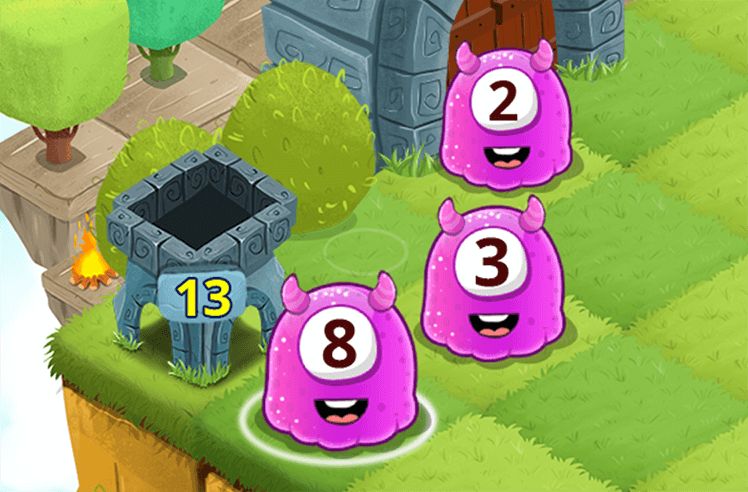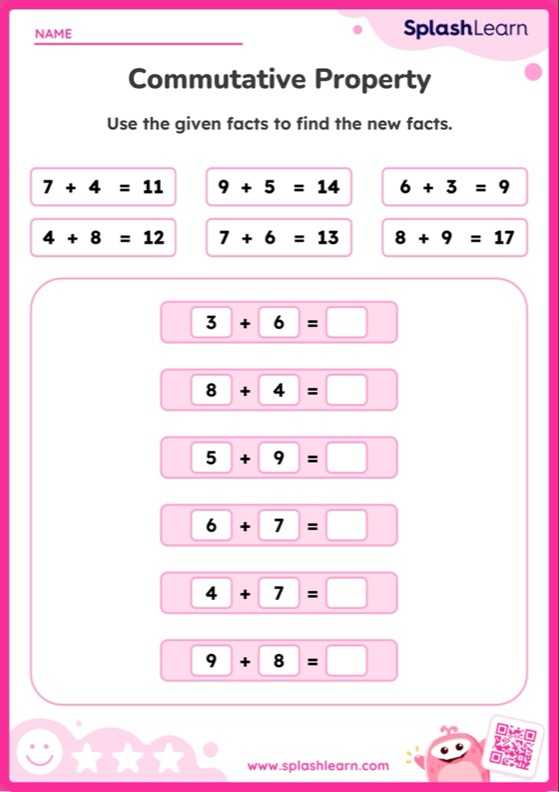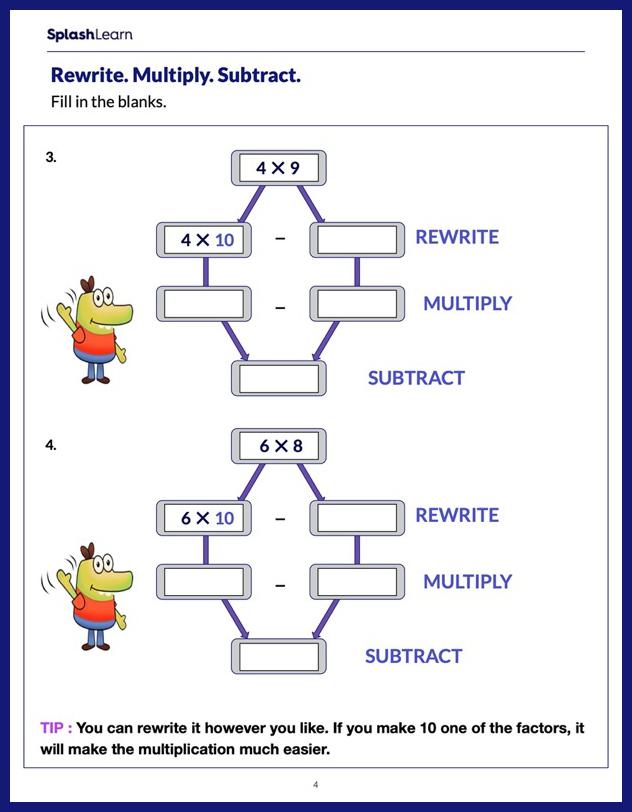What Is Closure Property?
The closure property states that if a set of numbers (integers, real numbers, etc.) is closed under some operation (such as addition, subtraction, or multiplication, etc.), then performing that operation on any two numbers in the set results in the element belonging to the set.
To understand this, let’s look at some questions that we often wonder about.
- Is the sum of two natural numbers a natural number? Yes!
- Is the subtraction of two integers always an integer? Yes!
- Do we always get an integer by the division of two integers? No!
The closure property is directly linked with such properties of any given set with respect to an operation. Let’s explore the closure property in detail for different operations and different sets.
Definition of Closure Property
The closure property states that when a set of numbers is closed under an arithmetic operation, performing the operation on any two numbers in the set always results in a number belonging to the same set of numbers.
If the operation results in even a single element outside the set, we can say that the set is not closed under the given operation.
Example 1: The addition of two real numbers is always a real number. Thus, real numbers are closed under addition.
Example 2: Subtraction of two natural numbers may or may not be a natural number. Thus, natural numbers are not closed under subtraction.
Recommended Games
Closure Property of Real Numbers
The set of rational numbers and irrational numbers together form the set of real numbers.
Real numbers include:
- Natural numbers $\left\{1,\;2,\;3,\; …\right\}$
- Whole numbers $\left\{0,\;1,\;2,\;3,\; …\right\}$
- Integers $\left\{…,\;-\;3,\;-\;2,\;-\;1,\;0,\;1,\;2,\;3,\;….\right\}$
- Rational numbers
- Irrational numbers
Real numbers are closed under the following operations: addition, subtraction, multiplication, division. Note that division by 0 is not defined. Division by zero is the only case where the closure property does not apply for real numbers. We can say that the real numbers are closed under non-zero division
| Closure Property of Real Numbers | |
| Real number $+$ Real number $=$ Real number | Closed under addition |
| Real number $\;-\;$ Real number $=$ Real number | Closed under subtraction |
| Real number Real number $=$ Real number | Closed under multiplication |
| Real number Real number $=$ Not always a real number | Closed only under non-zero division |
Recommended Worksheets
Closure Property for Integers
The set of integers is given by $Z = \left\{…,\; -\;3,\; -\;2,\; -\;1,\; 0,\; 1,\; 2,\; 3,\; … \right\}$.
The closure property holds true for addition, subtraction, and multiplication of integers. It does not apply for the division of two integers.
- Closure property of integers under addition:
The closure property of addition of integers states that the sum of any two integers will always be an integer. If a and b are any two integers, $a + b$ will be an integer.
Examples: $(\;-\;5) + 8 = 3$
$10 + 6 = 16$
- Closure property of integers under subtraction:
The difference between any two integers will always be an integer. If a and b are any two integers, $a \;-\; b$ will also be an integer.
Examples: $10 \;-\; 6 = 4$
$(\;-\;6) \;-\; (\;-\;3) = \;-\;3$
- Closure property of integers under multiplication:
The product of any two integers will be an integer. If a and b are any two integers, a b will also be an integer.
Examples: $3 \times (\;-\;9) = \;-\;27$
$(\;–\;7) \times (\;-\;9) = 63$
- Closure property of integers under division:
If you divide an integer by another integer, you may or may not get an integer as a quotient. Also, the division by 0 is not defined.
Examples: $\;-\;10 \div 5 = \;-\; 2$ is an integer.
$(\;-\;5) \div ( \;-\;25) = \frac{1}{5}$ is not an integer
| Closure Property of Integers | |
| Integer $+$ Integer $=$ Integer | Closed under addition |
| Integer $-$ Integer $=$ Integer | Closed under subtraction |
| Integer Integer $=$ Integer | Closed under multiplication |
| Integer Integer $=$ Not always an integer | Not closed under division |
Closure Property of Rational Numbers
Rational numbers are the numbers that can be represented in the form of $\frac{p}{q}$, where $q \neq 0$; p and q are integers.
The rational numbers are closed under addition, subtraction, and multiplication. The closure property isn’t applicable for division since division by zero isn’t defined.
In other words, we can say that closure property is applicable for division of rational numbers except division by zero.
1) $\frac{4}{7} + \frac{2}{3} = \frac{26}{21}$ is a rational number
2) $\frac{4}{3} \;–\; \frac{2}{4} = \frac{6}{12}$ is a rational number
3) $\frac{3}{5} \times \frac{2}{3} = \frac{6}{15}$ is a rational number
| Closure Property of Rational Numbers | |
| Rational number $+$ Rational number $=$ Rational number | Closed under addition |
| Rational number $–$ Rational number $=$ Rational number | Closed under subtraction |
| Rational number Rational number $=$ Rational number | Closed under multiplication |
| Rational number $\div$ Rational number $=$ Not always a Rational number | Closed only under non-zero division |
Closure Property of Whole Numbers
The set of whole numbers is given by $W = \left\{0,\; 1,\; 2,\; 3,\; 4,\; …\right\}$. Thus, whole numbers include natural numbers and 0.
The whole numbers are closed under addition and the multiplication. If a and b are two whole numbers, $a + b$ is a whole number and $a \times b$ is also a whole number.
For example,
1) $2 + 6 = 8$ …a whole number
2) $2 \times 6 = 12$ …a whole number
Whole numbers are not closed under subtraction and division. If a and b are two whole numbers, then $a \;-\; b$ and $a \div b$ is not always a whole number.
For example:
1) $6 \;-\; 1 = 5$ is a whole number.
2) $1\;-\; 6 = \;-\; 5$ is not a whole number.
3) $\frac{12}{6} = 2$ is a whole number.
4) $\frac{1}{6} = 0.167$ is a decimal number, not a whole number.
| Closure Property of Whole Numbers | |
| Whole number $+$ Whole number $=$ Whole number | Closed under addition |
| Whole number Whole number $=$ Whole number | Closed under multiplication |
| Whole number $-$ Whole number $=$ Not always a whole number | Not closed under subtraction |
| Whole number $\div$ Whole number $=$ Not always a whole number | Not closed under division |
Closure Property of Addition
If the addition of two numbers in a given set of numbers belongs to the set, then we say that the given set of numbers is closed under addition.
The set of real numbers, natural numbers, whole numbers, rational numbers, and integers are closed under addition.
| Closure Property of Addition | |
| Real Numbers | $a + b =$ Real number (a, b are real numbers.) |
| Rational Numbers | $a + b =$ Rational number (a, b are real numbers.) |
| Integers Numbers | $a + b =$ Integer (a, b are integers.) |
| Natural Numbers | $a + b =$ Natural number (a, b are natural numbers) |
| Whole Numbers | $a + b =$ Whole number (a, b are whole numbers) |
Closure Property of Multiplication
If the multiplication or product of two numbers in a given set of numbers belongs to the set, then we say that the given set of numbers is closed under multiplication.
The closure property of multiplication is applicable for natural numbers, whole numbers, integers, and rational numbers.
| Closure Property of Multiplication | |
| Real Numbers | $a \times b =$ Real number (a, b are real numbers.) |
| Rational Numbers | $a \times b =$ Rational number (a, b are rational numbers.) |
| Integers Numbers | $a \times b =$ Integer (a, b are integers.) |
| Natural Numbers | $a \times b =$ Natural number (a, b are natural numbers) |
| Whole Numbers | $a \times b =$ Whole number (a, b are whole numbers) |
Closure Property of Subtraction
If the subtraction of two numbers in a given set of numbers belongs to the set, then we say that the given set of numbers is closed under subtraction.
This property is applicable for real numbers, integers, and rational numbers.
| Closure Property of Subtraction | |
| Real Numbers | $a \;-\; b =$ Real number (a, b are real numbers.) |
| Rational Numbers | $a \;-\; b =$ Rational number (a, b are real numbers.) |
| Integers | $a \;-\; b =$ Rational number (a, b are real numbers |
Formula for Closure Property
For two real numbers a and b, the closure property formula can be given as
$a + b = R$
$a \;-\; b = R$
$a \times b = R$
$a \div b \neq R$ …since the division by 0 is not defined
Similarly, you can write the formulas for different sets with respect to each operation.
Facts about Closure Property
- Closure Property is a mathematical operation that is used in addition, subtraction and multiplication of numbers.
- If a set satisfies the closure property under a particular operation then it is said to be “closed under the operation.”
- The closure property of division tells us that the result of the division of two whole numbers is not always a whole number.
- Division of integers doesn’t follow the closure property as the quotient of any two integers a and b, may or may not be an integer.
- The result of the subtraction and division is not always a whole number.
Conclusion
In this article, we learned that the closure property is one of the most significant properties in mathematics. The closure property denotes that the set is complete. This indicates that any operation performed on elements within a set produces a result that belongs to the same set. Now let’s apply this knowledge to solve some closure property examples.
Solved Examples on Closure Property
1. Write whether the following statements are true or false.
a. Rational numbers are closed under division.
b. Natural numbers are closed under division.
c. Whole numbers are not closed under subtraction and division.
Solution:
a. Rational numbers are closed under division.
False
Rational numbers are closed under addition, subtraction, and multiplication but not under division.
b. Natural numbers are closed under division.
False
Consider two natural numbers 1 and 2.
$1\div2 = 0.5$, which is not a natural number.
c. Whole numbers are not closed under subtraction and division.
True
Whole numbers are only closed under addition and multiplication.
2. Are integers closed under division? Explain why or why not.
Solution:
Integers are not closed under division.
Consider a counter example.
The numbers 6 and 7 are integers.
However, $6\div 7 = 0.85$ is not an integer.
3. Give a counterexample to support the statement: Whole numbers are not closed under subtraction.
Solution:
Whole numbers include natural numbers and 0.
$W = \left\{0,\; 1,\; 2,\; 3,\; …\right\}$
For any two whole numbers a and b, the difference $a \;-\; b$ may or may not be a whole number.
Consider a counterexample.
0 and 1 are whole numbers.
However, $0 \;-\; 1 = \;-\;1$ is not a whole number.
Practice Problems on Closure Property
Closure Property: Definition, Formula, Examples
Closure property holds true for whole numbers under ______ and ______ .
Whole numbers are closed under addition and multiplication.
If $m$ and $n$ are two rational numbers, then the closure property of addition states that______ .
For any rational numbers a and b, a + b is also a rational number.
If a and b are integers, then ______ is also an integer.
Integers are closed under addition, multiplication, and subtraction.
Closure property does not hold true for ______ of integers.
Division of integers doesn’t follow the closure property.
Closure property does not hold true for ______ of rational numbers.
Rational numbers are not closed under division since the division by 0 is not defined.
Frequently Asked Questions on Closure Property
What is the commutative property of addition?
Commutative property of addition states that the order of the numbers being added does not matter. In other words,$a + b = b + a$.
What does the term “closure property” indicate?
The closure property or the property of closure denotes that the set is closed. Closure in mathematics means that any operation carried out on elements within a set results in a number that belongs to the same set.
There’s no chance of getting a number outside the given set. The term “operation closed” or “operation closure property satisfied” is used to describe any operation that meets this criterion.
Why are real numbers not closed under division?
Division of real numbers will always give us a real number EXCEPT in the case of division by 0.
The division by zero is undefined. That’s the only scenario where the closure property of division fails for the set of real numbers.
However, we can say that the real numbers are closed under non-zero division (division except division by 0). The same is the case when it comes to the set of rational numbers.
Is closure property applicable for irrational numbers ?
No. The set of irrational numbers is not closed under any of the operations.
Take a look at the counterexamples.
Addition: $\sqrt{2} + (\;-\;\sqrt{2}) = 0$
Subtraction: $\sqrt{3} \;-\; \sqrt{3} = 0$
Multiplication: $\sqrt{5}\times \sqrt{5} = 5$
Division: $\frac{\sqrt{125}}{\sqrt{5}} = 25$.
In each example, the answer is not an irrational number.
Is the set of real numbers closed under addition ?
Yes. The set of real numbers is closed under addition. If you add two real numbers, you will get another real number. There is no possibility of ever getting anything other than a real number.For example: $5 + 10 = 15,\; 2.5 + 2.5 = 5,\; 2\frac{1}{2} + 5 = 7\frac{1}{2},\; \sqrt{3} + 2\sqrt{3} = 3\sqrt{3}$ , etc.






























